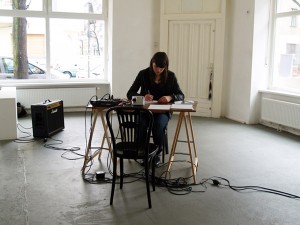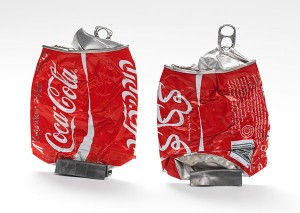An Interview with Alex Martinis Roe

Alex Martinis Roe, Encounters: Conversation in Practice, performance still, 2010.
Image courtesy of the artist.
To obtain a letter from a vending machine – even from an art vending machine – is rather unusual. In this interview, Australian artist Alex Martinis Roe explains what motivated her to create the artwork “A Letter to Deutsche Post.”
Christiane Bauer: Alex, you drafted a letter to Deutsche Post, asking the officers to reissue stamps depicting Rahel Varnhagen and Hannah Arendt. When our visitors purchase the letter, are they supposed to send it to Deutsche Post?
Alex Martinis Roe: I don’t expect visitors to send the letter to Deutsche Post, because I didn’t ask them to. They can do whatever they like with it. If they send it off, I’m happy. If they keep it, I’m also happy. (laughs) What I hope, is that they read the letter and become interested in the story.
Why did you choose to make a letter for the art vending machine? → continue reading
A Conversation with Andrei Krioukov

Artistically-treated Coca-cola cans
© Jewish Museum Berlin, photo: Jens Ziehe
As a contribution to our art vending machine, Andrei Krioukov treated and crushed Coca-Cola cans with Hebrew and Arabic labels. I met him and his wife Rita at their art school on Immanuelkirchstraße in Berlin. This is where Andrei teaches international students, who both study and take their state-recognized exams with him.
In our discussion Andrei talks about his fascination with the design of the famous cans and explains the elements of both trash and art they represent.
Christiane Bauer: Andrei, what fascinates you about the Coca-Cola can?
Andrei Krioukov: These cans are typical of our lives today. You can find them everywhere, but hardly anyone notices them. For me, the discrepancy between art and trash is an exciting subject: if a can is lying on the street, it’s trash. But if I pick it up and contemplate it, and I ponder what I can do with it, it turns into art.
An artist from the 19th century could paint garlic, an onion, or a pitcher of water. Today our lives are full of Coca-Cola cans.
The pitcher appeared in still life paintings as an object from everyday life. What significance does the can have? Do you see a can of Coke as a disposable article or as a modern cultural artifact? → continue reading
Opening this Friday at the Eric F. Ross Gallery
Fred Stein is a photographer whose work and biography leave no one unmoved. Some of his portraits are famous—those of Albert Einstein and Hannah Arendt for example—yet Fred Stein himself is not a household name. The young lawyer was forced to flee Germany in 1933. He went first to Paris, and then in 1941 to New York. In these cities of exile he made photography his new profession, producing numerous street scenes and portraits.
“In An Instant” struck us as an apt title for the exhibition of his extensive oeuvre scheduled to open at the Jewish Museum Berlin on 22 November. This title highlights Fred Stein’s talent for capturing his subjects at the decisive moment, spontaneously, and without elaborate preparations—a natural talent, incidentally, for he was a self-taught amateur.
Fred Stein’s special gift of observation is evident in the photograph “Little Italy” (New York, 1943), one of our many favorites. → continue reading

